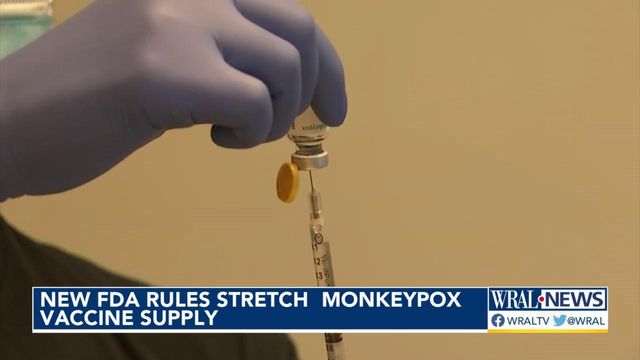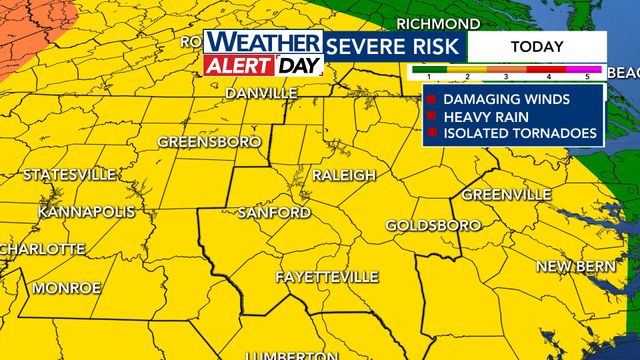New way of giving vaccine will stretch monkeypox doses to more people
The U.S. Food and Drug Administration announced Tuesday it is expanding its authorization to allow a different way to get a dose of the monkeypox vaccine due to high demand in some parts of the country.
Instead of a regular shot, providers can now use an intradermal shot between the layers of skin. The new way of vaccine injection is one-fifth of the original dose. It means five times as many people could get monkeypox vaccines.
Regulators point to a 2015 study showing that vaccination with one-fifth of the traditional dose generated a robust immune-system response comparable to that of the full dose. About 94% of people receiving the smaller dose had adequate levels of virus-fighting antibodies, compared with 98% of those receiving the full dose, according to the study funded by the National Institutes of Health.
Dawn O’Connell, assistant secretary for preparedness and response within the U.S. Department of Health and Human Services, said on Tuesday that there are about 441,000 vials available that will have the potential of providing 2.2 million doses to people across the country.
Intradermal injections are delivered into the skin, while subcutaneous injections are delivered into the layer of fat underneath the skin.
The JYNNEOS vaccine has been delivered subcutaneously, but the FDA will now allow intradermal injections.
How Triangle area health departments are responding
Public health leaders with Wake, Durham and Cumberland counties said they would follow direction from the North Carolina Department of Health and Human Services.
“NCDHHS is discussing the logistics and feasibility of the alternative regimen while we await further guidance from the CDC, but we are communicating with local health departments, vaccine clinics, etc. about the possible change and will provide guidance as more information becomes available,” wrote Health and Human Services communications manager Kelly Haight Connor in an email to WRAL News.
Wake County communications consultant Leah Holdren said the Wake County Department Public Health and Medical Services is looking at the new method of vaccine distribution as a possibility in the future, but it is not using it as of Tuesday.
“If this is approved by the FDA as an Emergency Use Authorization, the state would more than likely approve the intradermal route, and we would follow their recommendation,” Holdren wrote in an email to WRAL News.
As of Tuesday, Wake County public health leaders have administered 809 doses of the monkeypox vaccine, according to Holdren.
Holdren said giving a shot between the skin layers is not a process the Wake County team is familiar with.
“The use of the intradermal route with reduced volumes have not been used at WCHHS for at least 20 years,” Holdren wrote.
Durham County Department of Health public relations manager Alecia Smith said county has administered 350 doses of the Jynneos monkeypox vaccine as of Tuesday.
“At this time, we have not made plans to change the method of monkeypox vaccine administration,” Smith wrote in an email. “We will continue to abide by NC Department of Health and Human Services guidance for administration moving forward.”
Cumberland County health leaders have provided 40 doses as of Tuesday afternoon, according to Deputy Health Director Ashley Curtice.
“We are monitoring the possibility of this being recommended for distribution of the Jynneos monkeypox vaccine,” Curtice said. “We follow the directive and guidance from the State of North Carolina Department of Health and Human Services (NCDHHS) in accordance with the federal decision-making process and Centers for Disease Control and Prevention guidance.
“Our team is very familiar and comfortable with this type of vaccine injection and do so for our screening for tuberculosis in our Immunizations Clinic regularly.”
UNC doctor offers perspective on the FDA changes
University of North Carolina at Chapel Hill Dr. David Weber believes the new FDA guidance is a positive change.
“The skin, by the way, is an excellent way to give vaccines in general,” Weber said. “You get a very good immunologic reaction."
Weber said the side effects are similar with both kinds of injections. As pointed out by Curtice, Weber also mentioned how intradermal injections are used for tuberculosis screening.
Weber said maximizing the number of doses is important right now.
“The company that makes this can make more vaccine, but once we've used up what was stockpiled, it will take weeks to months to substantially increase the amount of vaccine that we have available," Weber said.











